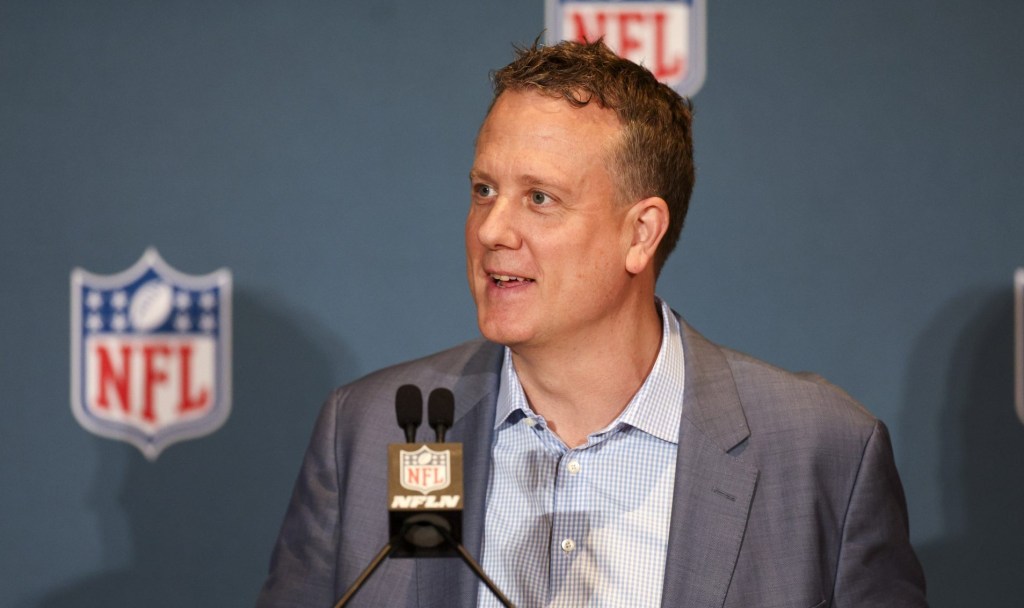By: Adam White, @FOSAdam

A posh venue in downtown Los Angeles, a star studded line up of speakers and a beautiful day all had the makings for a world class event. The Variety and Sports Illustrated Sports and Entertainment Summit didn’t disappoint.
Hosted at The Vibiana, in downtown Los Angeles, you were wrapped in luxury from the moment you entered the grounds. From a red carpet set up for photos, to a professional wait and security staff, no detail was overlooked.
Beyond just the physical aspect of the event, the panels provided a well-balanced overlook at the future of the sports and entertainment industry while the keynote conversations from both Dwyane Wade and Kobe Bryant stole the show.
Covering a wide range of topics from marketing to millennials to the state of live TV, the panelists brought energy and incredible insight from across the sports landscape.
Amongst the numerous panels and conversations shared by attendees, there were four areas that stood out for as trends to watch in the future.
1. Power to the People
Yo deadass this the first time I've ever watched hockey and this shit has been LIT for these first 45 seconds
— Tony X (@soIoucity) April 26, 2016
As media becomes saturated with so many ways to consume it, traditional media outlets will no longer have all of the “personalities” as the average person now has all of the tools in the palm of their hand to create their own brand. This was evident when long time ESPN media personality Hannah Storm said that, “At some point it will be inevitable that we see fans as talent.” With the availability of publishing platforms such as Medium and powerful marketing tools such as Twitter, fans continue to have more and more command over the content they create and the quality at which it is created. A perfect example of this “fan as talent” situation is the emergence of @soIoucity during the 2016 NHL Playoffs in which he live tweeted a St. Louis Blues game. The next week he was all over the news and saw his following shoot up to 81k. Is he a unicorn? Possibly, but only time will tell.
2. Snapchat and Sports go together like Peanut Butter and Jelly
It may seem silly that a lunchtime icon like PB&J can be compared to a relatively new social phenomenon, but just like you can’t think about lunch without thinking about PB&J, you can no longer think about sports and not think about Snapchat. Every park you go to has one or more custom filters, the teams have accounts that give fans seemingly personal access to key moments throughout the game and players have amassed millions of followers. Jordan Levin of the NFL, who partnered with Snapchat in 2015, believes this is more than just a fad saying, “Snapchat creates a degree of immediacy and intimacy that you can’t match anywhere.” Levin also believes that Snapchat has staying power because, “…it allows the stitching together of multiple fan experiences to give an overall feeling of what being at an event is like.” While the snaps may disappear, Snapchat isn’t going anywhere for the foreseeable future and that is something you should keep your eyes on.
3. Athletes Love to Control Their Own Message

With the emergence of platforms such as the Players’ Tribune and Uninterrupted, players across the sports landscape have taken the power of their message out of the hands of writers and instead are telling it themselves. Which is something they are enjoying being able to do.
“As athletes, we can now take the opinion out of your hand and put it in ours,” Dwyane Wade said in front of a packed house.
As the platforms continue to evolve and more athletes continue to put the power of controlling the message in their own hands, we will continue to see more examples of Durant’s announcement of joining the Golden State Warriors that he published on the Players’ Tribune.
4. Brands no Longer Just Want to Be a Plug and Play Sponsor
Gone are the days when brands were okay with shelling out millions of dollars for a sponsorship just to have the ability to say they presented an event, game or segment. In today’s sponsor saturated world, brands are turning to content creation to enhance the value and reach of their sponsorship agreements.
One of the best in the industry at doing this is Visa and leading the charge behind this switch to content generation is Kate Johnson, Visa’s VP of Global Sponsorship Marketing who said, “Brands no longer want to just be a part of ‘Insert brand here’ partnerships anymore. They want to create access through content generation.”
Luckily for brands, there is now a myriad of ways and mediums to create and publish content, something that brand and sponsorship executives are now looking at in order to maximize every sponsorship dollar they spend.
In what was described as an event that had a “murders row” of panelists by SI Editorial Director Chris Stone, the event lived up to the hype and gave a well-rounded look into the state of the sports and entertainment media world and a preview of what is to come in the future.

















